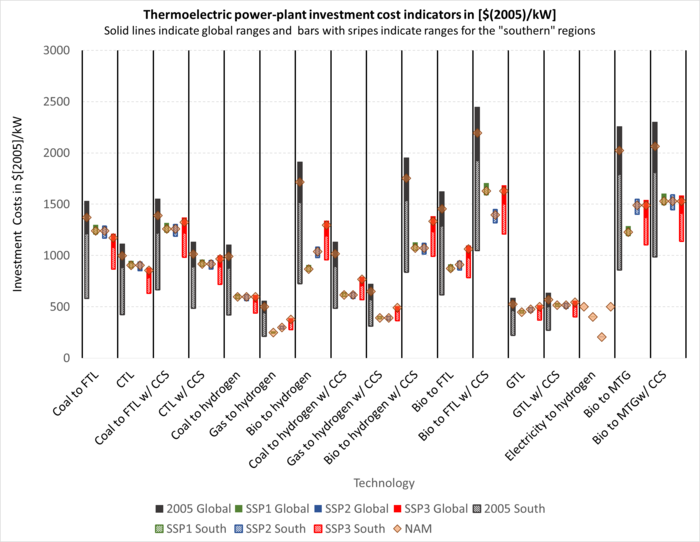Gaseous fuels - MESSAGE-GLOBIOM
| Corresponding documentation | |
|---|---|
| Previous versions | |
| Model information | |
| Model link | |
| Institution | International Institute for Applied Systems Analysis (IIASA), Austria, http://data.ene.iiasa.ac.at. |
| Solution concept | General equilibrium (closed economy) |
| Solution method | Optimization |
| Anticipation | |
See <xr id="tab:MESSAGE-GLOBIOM_gasfuel"/> for a list of gaseous fuel production technologies in MESSAGE.
<figtable id="tab:MESSAGE-GLOBIOM_gasfuel">
| Energy Source | Technology |
|---|---|
| Biomass | biomass gasification |
| biomass gasification with CCS | |
| Coal | coal |
| coal gasification with CCS |
</figtable>
Hydrogen Production
See <xr id="tab:MESSAGE-GLOBIOM_hydtech"/> for a list of hydrogen production technologies in MESSAGE.
<figtable id="tab:MESSAGE-GLOBIOM_hydtech">
| Energy source | Technology | Electricity cogeneration |
|---|---|---|
| Gas | steam methane reforming | yes |
| steam methane reforming with CCS | no | |
| Electricity | electrolysis | no |
| Coal | coal gasification | yes |
| coal gasification with CCS | yes | |
| Biomass | biomass gasification | yes |
| biomass gasification with CCS | yes |
</figtable>
As already mentioned in the section for :ref:`electricity`, technological change in MESSAGE is generally treated exogenously, although pioneering work on the endogenization of technological change in energy-engineering type models has been done with MESSAGE (Messner, 1997 MSG-GLB_messner_endogenized_1997). The current cost and performance parameters, including conversion efficiencies and emission coefficients is generally derived from the relevant engineering literature. For the future alternative cost and performance projections are usually developed to cover a relatively wide range of uncertainties that influences model results to a good extent. As an example, <xr id="fig:MESSAGE-GLOBIOM_costind"/> below provides an overview of costs ranges for a set of key energy conversion technologies (Fricko et al., 2016 MSG-GLB_fricko_marker_2016).
<figure id="fig:MESSAGE-GLOBIOM_costind">
</figure>
In <xr id="fig:MESSAGE-GLOBIOM_costind"/>, the black ranges show historical cost ranges for 2005. Green, blue, and red ranges show cost ranges in 2100 for SSP1, SSP2, and SSP3, respectively. Global values are represented by solid ranges. Values in the global South are represented by dashed ranges. The diamonds show the costs in the “North America” region. CCS – Carbon capture and storage; CTL – Coal to liquids; GTL – Gas to liquids; BTL – Biomass to liquids (Fricko et al., 2016 MSG-GLB_fricko_marker_2016).
